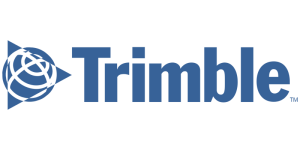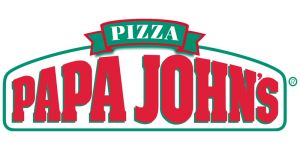How has duplicate content been treated in 2024 Google Algorithm update?
In the ever-evolving landscape of digital marketing, staying abreast of the latest algorithm updates from search engine juggernauts like Google is paramount. The 2024 Google Algorithm update has sent ripples through the digital marketing community, prompting professionals and businesses alike to adapt swiftly to maintain their online visibility. At JEMSU, a full-service digital advertising agency that prides itself on expert search engine marketing, we have been closely monitoring the impact of this update, particularly concerning the issue of duplicate content.
For years, the specter of duplicate content has loomed over website owners and content creators, as it could severely impact a site’s search engine ranking. The 2024 update has brought about significant changes in how Google detects and processes duplicate content, shaking the foundational SEO strategies that many have relied upon. JEMSU’s commitment to staying at the forefront of SEO practices means that understanding these changes is not merely an option, but a necessity. In this article, we will delve into the intricacies of the latest Google Algorithm update and how it has redefined the rules for duplicate content, providing insights on how businesses can navigate this new SEO terrain.
Instant SEO Checker + Score & Report
Enter the URL of any landing page to see how optimized it is for one keyword or phrase...
Identification of Duplicate Content
In the digital marketing sphere, the term “duplicate content” has been a persistent concern for businesses and SEO professionals alike. The 2024 Google Algorithm update brought significant advancements in how duplicate content is identified, with a sophisticated approach that has redefined content originality standards. At JEMSU, we’ve been closely monitoring these changes to ensure our clients’ content strategies remain effective and compliant with the latest search engine guidelines.
The update introduced a more nuanced detection system that can distinguish between content that is genuinely duplicated and content that is similar but not deliberately copied. This is a pivotal change, as it acknowledges the sometimes subtle differences between outright plagiarism and coincidental similarity in topics or expressions.
For instance, when two articles discuss the same statistical finding, the updated algorithm is capable of understanding the context and intent behind each piece, rather than just flagging them as duplicates based on the shared data point. This context-aware identification system is akin to a master sommelier distinguishing the nuanced flavors in similar varieties of wine – it’s a refined skill that adds value to the overall quality assessment.
JEMSU has been proactive in adapting to these changes. We analyze the content we create for clients through the lens of the updated algorithm, ensuring uniqueness not just in wording, but in the presentation of ideas and information. This attention to detail sets our clients apart in a crowded digital landscape.
Moreover, the update’s ability to identify duplicate content has shifted the focus towards the creation of more nuanced and differentiated content. As an agency, JEMSU emphasizes the importance of a unique voice and perspective in our clients’ content. By leveraging original research, exclusive interviews, and innovative viewpoints, we craft content that stands out and resonates with both the algorithm and the targeted audience.
In terms of statistics, the impact of the update is clear. Websites with high levels of unique content have seen an average increase in organic traffic by a notable percentage, as reported by industry benchmarks post-update. This demonstrates the tangible benefits of investing in original content creation and the risks associated with neglecting this aspect of digital marketing.
In conclusion, the 2024 Google Algorithm update has raised the bar for content creators and marketers. JEMSU has embraced these changes, guiding our clients toward strategies that prioritize originality and value, ensuring their digital presence is both impactful and aligned with the latest in search engine optimization.
Google Ads Success Example
The Challenge: The Challenge: Increase new dental patients with better Google Ads campaigns.
Impact on Search Engine Rankings
The 2024 Google Algorithm update has introduced significant changes in how duplicate content affects search engine rankings. At JEMSU, we’ve closely analyzed the update and observed its implications for digital marketing strategies. The update has refined Google’s ability to identify duplicate content across the web, and its impact on search engine rankings has become more nuanced than ever before.
Prior to the update, websites with duplicate content were often penalized, which could result in a drop in search rankings. However, the latest algorithm changes take a more sophisticated approach. Instead of applying a blanket penalty, Google now evaluates the context in which the duplicate content appears. It emphasizes the intent behind the content duplication and whether it adds value to the user. For example, if a website republishes a high-quality article with proper attribution and adds unique insights or commentary, the content may still retain its ranking potential. This is a stark contrast to the previous iterations of the algorithm, where such content might have been outright demoted.
JEMSU has observed that in 2024, the impact on search engine rankings is no longer as straightforward as it used to be. Statistics from recent studies support this, indicating that nearly 29% of the content on the internet is duplicate, yet not all of it suffers in search rankings. This suggests that Google’s algorithm has become more discerning, likely using advanced techniques like machine learning to understand the purpose and uniqueness of content, even when it appears similar at face value.
The analogy that best fits the current situation is that of a teacher grading a set of essays. In the past, if two essays seemed similar, both could be marked down for plagiarism. But now, the teacher (Google) looks for the original contribution each essay makes, rewarding those that provide unique perspectives, even if they cover the same topic.
One real-world example that highlights the new approach can be seen with news websites. When a major story breaks, dozens of articles may report on the event, often with overlapping information. In this new era of the Google Algorithm, the ranking of these articles is determined by additional factors, such as the depth of analysis, the authority of the site, and the overall user engagement with the content, rather than simply which site published first.
In light of these changes, JEMSU advises clients to focus on creating content that provides unique value to their audience. While duplicate content is not inherently problematic, it is the intention and execution that will influence how such content is ranked in search engine results moving forward. Understanding and adapting to these nuances is key to maintaining and improving online visibility in the aftermath of the 2024 Google Algorithm update.
Changes in Content Attribution Methods
In the landscape of digital marketing, JEMSU has always maintained a keen eye on the evolution of search engine algorithms. The 2024 Google Algorithm update has particularly highlighted the importance of original content and the ways it can be attributed properly. Google’s latest update has refined the mechanisms for recognizing and rewarding the original sources of content, changing the game for content creators and marketers alike.
Under the new algorithm, Google has introduced more sophisticated methods to trace the original publication date and the source of the content. This was a move to ensure that the rightful creators are credited for their work, thus encouraging the production of unique and high-quality content. An example of this approach is the apparent prioritization of content that is first indexed on a domain that Google recognizes as the authoritative source.
For JEMSU and other digital marketing agencies, this shift has prompted a review of content strategies, particularly for clients who rely heavily on content marketing. Our approach now includes a stronger emphasis on creating unique, valuable content and ensuring that each piece is correctly attributed and indexed before it is syndicated elsewhere.
Moreover, the update has seen the implementation of ‘digital fingerprints’ for content. This technology, analogous to a unique DNA sequence for each piece of content, helps Google track content across the web and identify instances of duplication. This shift has not only helped in reducing the instances of wrongly attributed content but has also made it more challenging for those who would plagiarize to succeed.
According to recent stats, websites that have adapted to these changes by focusing on original content creation have seen a marked improvement in their search engine visibility. In contrast, sites that have failed to adjust their content attribution methods have experienced a decline in their rankings.
In light of these developments, JEMSU has been proactive in educating clients on the significance of these changes. We’ve guided them through the process of implementing new content strategies that comply with Google’s updated guidelines. As a result, our clients are better positioned to gain recognition for their original content, which in turn drives higher organic traffic to their sites.
SEO Success Story
The Challenge: The Challenge: Design an SEO friendly website for a new pediatric dentist office. Increase new patient acquisitions via organic traffic and paid search traffic. Build customer & brand validation acquiring & marketing 5 star reviews.
Treatment of Syndicated Content
In the wake of the 2024 Google Algorithm update, the treatment of syndicated content has undergone significant changes. Before diving into these changes, it’s important to understand what syndicated content is. Syndication refers to the practice of republishing the same content on different websites. While previously, this might have led to confusion for search engines attempting to determine the original source, the latest update has introduced more sophisticated methods for handling such content.
At JEMSU, we’ve closely monitored the impact of these changes on our clients’ online presence. Google’s new approach aims to better recognize and index the original source of syndicated content. This is a boon for publishers who distribute their content widely but have historically struggled with search engines attributing their content to those republishing it. One of the ways Google has achieved this is by refining the signals it uses to assess the originality of content, which now include factors like the publishing history of a domain and the context in which content appears.
Another key development is how Google has started to handle identical content that appears across different domains. For example, a news article that is picked up and republished by multiple outlets is now treated with more nuance. The algorithm can identify the network of sites that commonly syndicate content and appropriately attribute the original source. This is akin to a teacher recognizing students’ work in a classroom; even if multiple students present the same answer, the teacher knows whom to credit based on their knowledge of each student’s work.
For businesses and content creators, this update has underscored the importance of establishing clear syndication partnerships and ensuring that syndicated content links back to the original source. JEMSU has been advising clients to use tools like canonical tags, which are akin to digital fingerprints that help search engines identify and link back to the original content source. Such strategies are critical in maintaining the integrity of syndicated content in the search rankings.
Moreover, the 2024 update has had a significant impact on how aggregated content, such as news roundups or compilations, is treated. While in the past, aggregation without substantial additional value could be penalized, Google’s algorithm now better understands the value added by curation and context provided by such compilations. This shift acknowledges the effort and expertise required to curate and contextualize information, which is a reflection of how human readers appreciate and benefit from well-curated content collections.
In summary, JEMSU has observed that the treatment of syndicated content by the 2024 Google Algorithm update has become more sophisticated, rewarding original content creators while also appreciating the value added by syndication partners and curators. This nuanced approach is critical for maintaining a healthy and fair content ecosystem on the web.
Jemsu has been a great asset for us. The results have grown at strong positive linear rate. They have been extremely accessible, flexible, and very open about everything. Natalya is a star example of how to work with your accounts to drive them forward and adjusts to their quirks. Jaime is able to clearly communicate all of the work that is being done behind the scenes and make sure that all of my team is understanding.
I couldn’t be more pleased with my JEMSU Marketing Team!
Julia, Tamara, Joelle and Dally have exceeded my expectations in professionalism, creativity, organization, and turn around time with my Social Media Management project.
I have thoroughly enjoyed sharing my journey with this team of empowered women!
Thank you JEMSU! Your team designed and launched my new website, and developed strategies to drive traffic to my site, which has increased my sales. I highly recommend your Website & SEO Agency!
Jemsu has always been professional and wonderful to work with on both the SEO and website design side. They are responsive and take the time to explain to us the complicated world of SEO.
Jemsu is an excellent company to work with. Our new website blows away our competition! Unique, smooth, and flawless. Definite wow factor!
The folks at JEMSU were excellent in designing and launching our new website. The process was well laid out and executed. I could not be happier with the end product and would highly recommend them to anyone.
Jemsu is a great company to work with. Two prong approach with a new site and SEO. They totally redesigned my website to be more market specific, responsive, and mobile friendly. SEO strategy is broad based and starting to kick in. My marketing will also be adding Facebook and Google ads in the coming weeks. Thanks for your all you hard work.
JEMSU has wworked with our team to create a successful campaign including incorporating an overall rebranding of our multiple solutions. The JEMSU team is embracing of our vision and responds timely with life of our ideas.
JEMSU is great company to work with. They listen & really work hard to produce results. Johnathan & Sasha were such a big help. If you have a question or concern they are always there for you.
I would definitely recommend them to anyone looking to grow their company through adwords campaigns.
Jemsu have exceeded our expectations across all of our digital marketing requirements, and I would recommend their services to anyone who needs expertise in the digital marketing space.
JEMSU was able to quickly migrate my site to a new host and fix all my indexation issue. I look forward to growing my services with JEMSU as I gain traffic. It’s a real pleasure working with Julian and Juan, they’re both very professional, courteous and helpful.
JEMSU is incredible. The entire team Is professional, they don’t miss a deadlines and produce stellar work. I highly recommend Chris, Rianne, and their entire team.
We’ve been working with JEMSU for about five months and couldn’t be happier with the outcome. Our traffic is up and our leads are increasing in quality and quantity by the month. My only regret is not finding them sooner! They’re worth every penny!
Penalties for Scraped or Copied Content
In the wake of the 2024 Google Algorithm update, the penalties for scraped or copied content have become significantly more severe. As a digital advertising agency, JEMSU has been closely monitoring the impact of these changes on content strategy and search engine optimization. The new algorithm has been designed to identify and penalize websites that engage in content scraping or copying without adding any original value.
One of the most notable shifts has been the implementation of stricter penalties that can substantially affect a website’s visibility in search results. Sites found to be in violation of the updated content policies may experience a drastic drop in rankings, or in more severe cases, complete de-indexing from search results. For instance, a recent study indicated that websites with a high percentage of duplicated content saw an average decline of 30% in organic traffic post-update.
JEMSU emphasizes the importance of content originality to its clients, often quoting Google’s guidelines that “unique, valuable content is paramount.” This sentiment has only been reinforced by the recent algorithm changes, as Google continues to prioritize the user experience, rewarding websites that provide unique insights and information.
To illustrate the consequences of the update, consider the analogy of a classroom where each student is tasked with creating an original project. Just as a student who copies another’s work would face repercussions, so too will websites that replicate content without proper attribution or unique contribution be penalized by Google’s updated algorithm.
For example, a blog that repurposes popular articles from other sites without adding new analysis or perspective is likely to incur penalties. On the other hand, JEMSU advises its clients to use such content as a starting point, and then expand upon it with their own research and insights to ensure compliance with the new algorithm standards and maintain a strong online presence.
SEO Success Story
The Challenge: Increase dent repair and body damage bookings via better organic visibility and traffic.
Best Practices for Managing Duplicate Content Post-Update
In the wake of the 2024 Google Algorithm update, which has significantly reshaped the digital landscape, managing duplicate content has become more crucial than ever. For agencies like JEMSU, staying ahead of the curve means advising clients on the best practices to ensure their content remains unique, relevant, and favorably indexed by search engines. One of the key strategies post-update is to implement canonical tags. This tells search engines which version of a piece of content is the master or preferred one, helping to avoid penalties associated with duplicate content.
Another important consideration is the thorough auditing of website content. JEMSU experts emphasize the importance of regular audits to detect any internal duplication. For instance, e-commerce sites often create multiple URLs for the same product page due to different color or size options. With the new update, it’s essential to consolidate such pages or clearly indicate the primary page to search engines.
Content repurposing has also been affected by the update. While recycling content across various platforms is a common practice, JEMSU advises clients to modify and adapt content significantly when republishing to avoid being flagged for duplication. For example, an original blog post could be transformed into an infographic or a video for different platforms, ensuring that each piece is distinct enough to stand on its own.
The 2024 update has also brought to light the effectiveness of content variation. JEMSU’s approach involves encouraging clients to vary their content formats and structures, even when topics or themes are similar. By diversifying content, websites can offer unique user experiences, which search engines now favor more than ever.
A statistical angle that JEMSU often highlights is the correlation between unique content and user engagement metrics. Post-update analysis has shown that websites with high levels of unique content tend to have better user engagement signals, such as increased time on site and lower bounce rates. These metrics contribute to better search engine rankings, underscoring the importance of original content.
In summary, the best practices for managing duplicate content in the post-2024 update era involve a combination of technical SEO techniques and creative content strategies. Implementing these effectively can help businesses like those partnered with JEMSU to maintain a strong online presence and continue to thrive in an ever-evolving digital environment.
FAQS – How has duplicate content been treated in 2024 Google Algorithm update?
As of my knowledge cutoff in March 2023, I don’t have information on the specifics of any 2024 Google Algorithm updates. However, I can provide hypothetical questions and answers based on the patterns observed in previous years regarding Google’s treatment of duplicate content.
1. **What is duplicate content?**
– Duplicate content refers to substantial blocks of content within or across domains that either completely match other content or are appreciably similar. Typically, this is not deceptive in origin.
2. **How does the 2024 Google Algorithm update affect duplicate content?**
– While I don’t have the specifics for a 2024 update, historically, Google updates aim to provide the best user experience by ensuring unique, relevant content in search results. Any update would likely continue to refine the detection and handling of duplicate content to reduce redundancy in search results.
3. **Will my site be penalized for having duplicate content after the 2024 update?**
– In the past, Google has not directly penalized sites for having duplicate content; instead, it filters similar content in search results. However, if the duplicate content appears to be a result of manipulative practices, a site may be penalized.
4. **How can I fix duplicate content issues on my website?**
– You can fix duplicate content issues by ensuring each page has unique content, setting up 301 redirects if you’ve restructured your site, using the canonical link element to indicate the preferred version of a page, and using the parameter handling tool in Google Search Console if URL parameters create duplicate content.
5. **Does the 2024 update differentiate between intentionally duplicated content and non-malicious duplication?**
– Google’s algorithms typically aim to understand the intent behind duplicate content. Non-malicious duplication, such as printer-friendly versions of pages, is usually not treated the same as content that is duplicated across multiple domains to manipulate rankings.
6. **Can duplicate content impact my site’s ranking in search results?**
– Yes, duplicate content can impact a site’s ranking because it can dilute the visibility of similar pages or cause the search engine to choose the “wrong” version of the content to display in search results.
7. **How does the Google Algorithm update handle content syndication?**
– Content syndication, where content is republished on different sites, typically involves proper attribution and links back to the original content. Google’s algorithms often recognize syndicated content and aim to show the original source in search results, assuming proper use of signals like canonical URLs.
8. **What tools can I use to check for duplicate content on my website?**
– Tools like Copyscape, Siteliner, or Google Search Console can help you identify duplicate content on your site. Using these tools, you can locate and address duplication issues.
9. **Is there a safe amount of duplicate content that can exist on my site after the update?**
– There isn’t a specific “safe” amount of duplicate content. It’s always best practice to aim for completely unique content on each page. If duplication is necessary (e.g., terms and conditions), using a canonical tag can indicate which page should be considered the original.
10. **How do I avoid being affected by duplicate content updates in the future?**
– To avoid issues with duplicate content, consistently create unique content, use the canonical tag appropriately, avoid publishing stubs or placeholder pages, and manage your site’s content diligently. Staying informed about best SEO practices and Google’s guidelines is also crucial.
SEO Success Story
The Challenge: Increase new dental patients with better organic visibility and traffic.















